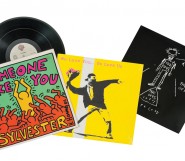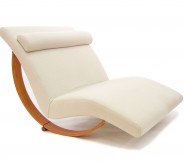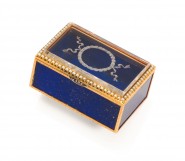Lot #66 - Turkey Tolson (Tjupurrula)
-
Auction House:Mossgreen
-
Sale Name:Australian Indigenous & Oceanic Art
-
Sale Date:22 Jul 2014 ~ 6.30pm (Part 1 - Lots 1 - 198)
23 Jul 2014 ~ 2.30pm (Part 2 - Lots 199 - 331) -
Lot #:66
-
Lot Description:Turkey Tolson (Tjupurrula)
(1942-2001)
Straightening Spears at Ilyingaungau (1999)
synthetic polymer paint on linen
153 x 183 cm -
Provenance:Papunya Tula Artists, Alice Springs (TT991091); Gallery Gabrielle Pizzi, Melbourne; Private Collection, United States of America; Important Aboriginal and Oceanic Art, Deutscher and Hackett, Melbourne, 24 March 2010, lot 29; Private Collection, Queensland
-
References:RELATED WORKS Straightening the Spears 1999, synthetic polymer paint on canvas, 152 x 183 cm, in Hetty Perkins, One Sun One Moon: Aboriginal Art in Australia, Art Gallery of New South Wales, 2007, p. 186 (illus.), collection of the Art Gallery of New South Wales.
-
Notes:This painting is sold with a Papunya Tula Artists certificate that reads, "During mythological times a group of men camped at the site of Illyingaugau near the secret cave site of Mitukatjirri, south-east of the Kintore Community." The rows of dots through this work represent spears which the men are straightening. This is done by slightly warming the spear over a fire and straightening while it is warm. These men were preparing their spears as they had heard of a possible confrontation with a group of men from the Tjikari area further north. Turkey Tolson Tjupurrula's Straightening Spears at Ilyingaungau has come to stand for the artist himself. Tolson was the tallest of the Pintupi and certainly the thinnest; he had a way of materializing into your peripheral vision, long and strait as a spear. Turkey Tolson was born under a river red gum not long after after his family migrated from the Western Desert to the mission-run ration station at Haasts Bluff. He grew up traditionally, learning to hunt in the rich country around the MacDonnell Ranges, far from the dune-country of his ancestors. The artist customarily wore a wide-brimmed stockman's hat, the top of a Marlborough packet visible from the chest-pocket of his cowboy shirt. He was a consummate bushman and a straight shooter; his hunting expeditions were always successful. As kids played in the evening light, Tolson would calmly supervise roasting bush turkey, emu or kangaroo in the coals of a bush oven, and then generously share the meat from a bed of mulga leaves. It was not until the mid 1980s that Tolson and his family returned to the country of his ancestors, and while based at Kintore he established an outstation at Yuwalki, only a few kilometres from the small clay-pan Ilyingaungau, celebrated in this work. From a small lunette on the pan's eastern edge, Tolson would point towards the cave site, Mitukatjirri in the southwest, from where a group of men had travelled, to prepare for battle. There, he explained how the Mitukatjirri men used their teeth as vices to straighten thin mulyati spears, made pliable over fire.1 Their enemy, the Nyananana men from Tjikarri, have been immortalized in the paintings of Johnny Warangula Tjupurrula. Tolson first painted a similar version of this work as the central element in East to West: land in Papunya Tula painting.2 The Art Gallery of South Australia purchased the painting instantly, for as well as evoking the endless parallel dune-fields of the Western Desert, its minimalism was immediately striking and utterly contemporary. Tolson and his countryman, Mick Namarari Tjapaltjarri, went on to become the most influential early proponents of Western Desert minimalism. Recognising their international significance, Gallery Director, Gabrielle Pizzi highlighted these works at exhibitions and art fairs in Milan, Madrid and Venice. John Kean 1 The author visited the site with the artist several times during 1984-5 2 The author curated East to West: land in Papunya Tula painting at Tandanya the National Aboriginal Cultural Institute for the Adelaide Festival 1990.
-
Estimate:A$25,000 - 35,000
-
Realised Price:
-
Category:Art
This Sale has been held and this item is no longer available. Details are provided for information purposes only.










